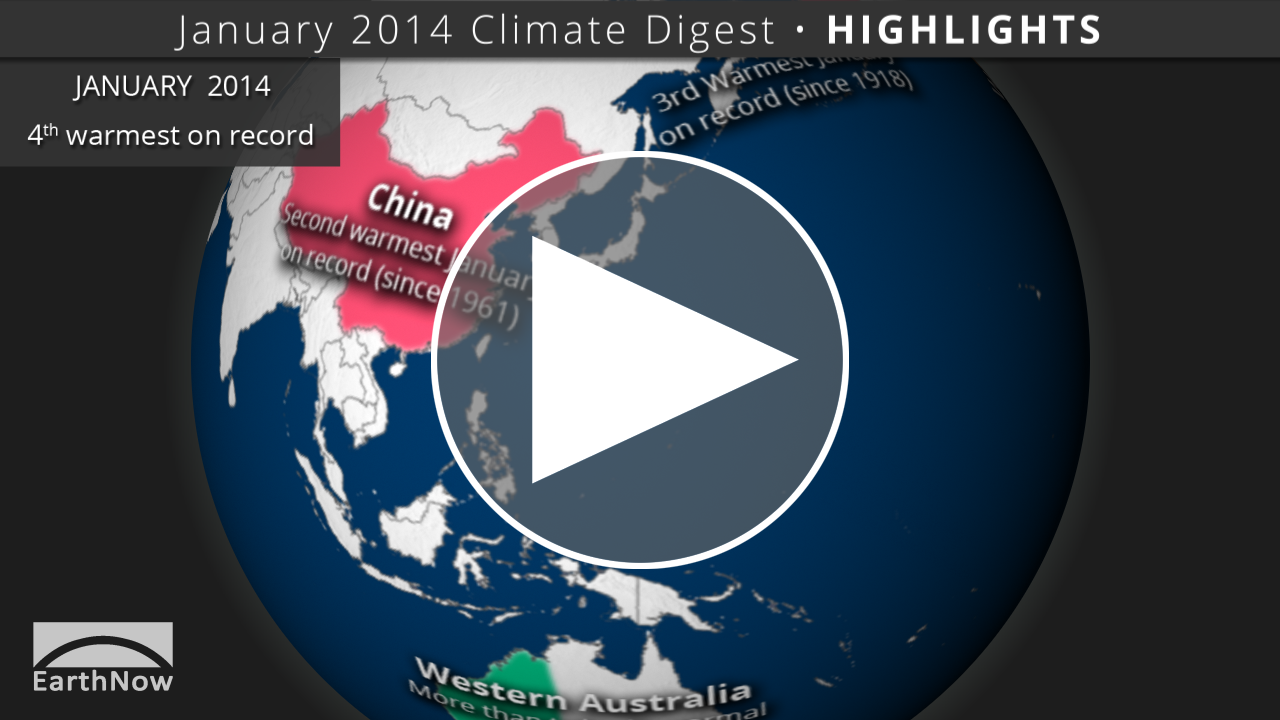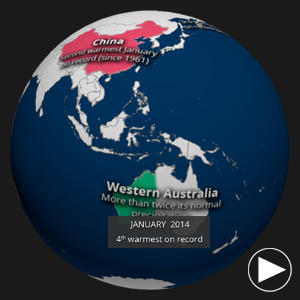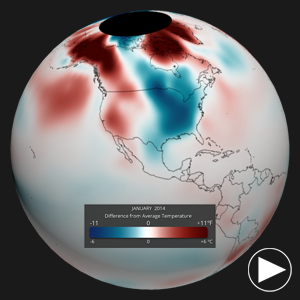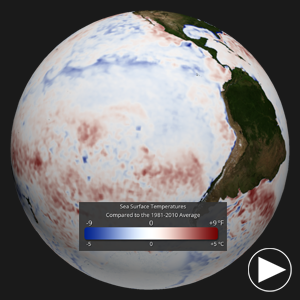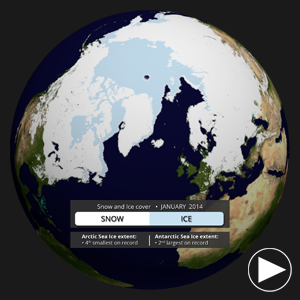Overview
Each month, we will provide information regarding the previous month’s climate. Overall, preliminary data analysis suggests that January 2014 was the fourth warmest January on record (since 1880). Major stories include a colder than average United States, record-breaking temperatures Argentina, and above average precipitation in Australia.
Highlights Dataset
Dataset: 20140221 EarthNow: January 2014 Highlights
Dataset: 20140221 EarthNow: AUDIO January 2014 Highlights
 Full Map Image
Full Map Image
- This dataset shows some of the major November weather and climate highlights from the National Climatic Data Center’s (NCDC) monthly global climate analysis, and serves as an overview of what can be discussed in the datasets that follow. Highlights are noted below with more information.
- Argentina: Persistent heat wave during the middle of the month. Several locations broke records.
- United States: Central and Western U.S. experienced below-average precipitation. It was the fifth driest on record.
- Alaska: Third warmest January since records began in 1918.
- Australia: Western Australia had more than twice it’s normal precipitation. It was the fifth wettest January on record.
- China: Second warmest January (after 2002) on record.
- United Kingdom: Third wettest January on record.
Global Temperature Anomalies Dataset
Dataset: 20140221 EarthNow: January 2014 Temperature Anomaly
Dataset: 20140221 EarthNow: AUDIO January 2014 Temperature Anomaly
 Full Map Image
Full Map Image
- Using the real-time Monthly Temperature Anomalies dataset is a great way to convey where some of the warmer and cooler than average areas were in January, including those mentioned above in the highlights.
- The combined global land and ocean average surface temperature for January was the fourth warmest on record (since 1880).
Sea Surface Temperature Anomalies Dataset
Dataset: 20140221 EarthNow: January 2014 SST Anomaly
Dataset: 20140221 EarthNow: AUDIO January 2014 SST Anomaly
- The real-time sea surface temperature anomaly dataset is a great way to visualize the El Niño – Southern Oscillation (ENSO) cycle in the eastern tropical Pacific ocean.
- Global water temperatures were the seventh warmest for January on record.
- Remember that the blues indicate cooler than average temperatures and reds indicate warmer than average temperatures (white: average).
Snow and Ice Cover Dataset
Dataset: 20140221 EarthNow: January 2014 Snow and Ice Cover
Dataset: 20140221 EarthNow: AUDIO January 2014 Snow and Ice Cover
- Aside from helping to illustrate seasonal changes, the real-time Snow and Ice Cover dataset is a great way to convey sea ice change through time, including discussing how the current sea ice extent compares to other noteworthy years.
- The Arctic sea ice extent for January 2014 was the fourth lowest on since satellite records began in 1979.
- In Antarctica, the sea ice extent was the second largest on record.
Where do I find the datasets?
-
First, check your SOS system to make sure it’s not already in the EarthNow category.
-
If not, you can download the datasets and playlist files from this FTP Site.
-
Then download and use playlist files at the top of the page (or create your own) and make sure they are in /home/sos/sosrc or /home/sosdemo/sosrc.
-
More detailed information here
Helpful Resources for More Information
-
http://go.wisc.edu/3nd6pg National Climatic Data Center (NCDC)
-
http://go.wisc.edu/9y2618 About ENSO (El Niño/La Niña)
-
http://go.wisc.edu/1nx2n3 NCDC’s Global Climate Report

